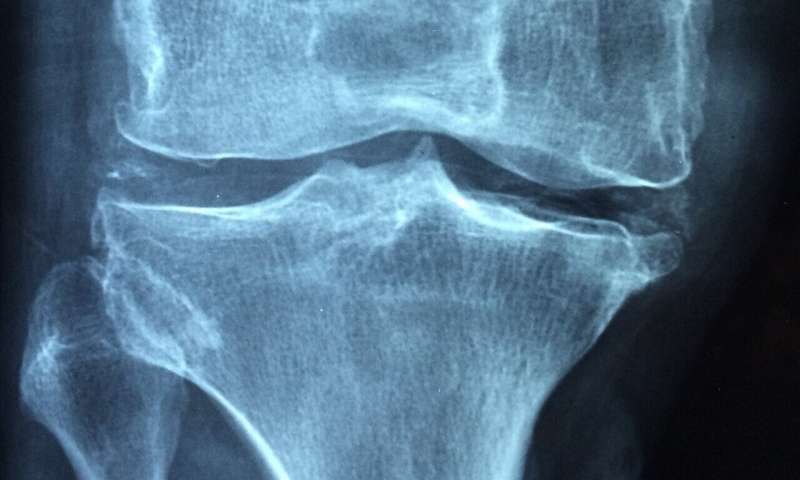This article has been reviewed according to Science X's editorial process and policies. Editors have highlighted the following attributes while ensuring the content's credibility:
fact-checked
proofread
Exploring whether different joints have different treatment outcomes in cases of psoriatic arthritis

There are many treatment options for psoriatic arthritis (PsA), and EULAR—The European Alliance of Associations for Rheumatology—recommends a practical and progressive approach to management based on specific manifestations and disease activity. But assessment of treatment outcomes primarily focuses on improvement in the number of affected joints, disregarding their specific locations.
Arthritis affects various joints differently, despite systemic inflammatory cues. In people with rheumatoid arthritis, transcriptomic variances identified in synovial fibroblasts from various joint sites have been shown to translate into joint-specific phenotypes with distinct characteristics and responsiveness to cytokines. These findings suggest that different joints may potentially respond variably to specific immunosuppressive treatments.
To expand on this, researcher Adrian Ciurea and colleagues set out to investigate whether joints at different anatomical locations in people with PsA might respond differently to treatment with a tumor necrosis factor inhibitor (TNFi). The results have been released in an abstract at the 2024 EULAR congress in Vienna.
The research was based on real-life data from several European registries collaborating in the EuroSpA network—and over 1,700 PsA patients starting a first TNFi. The primary outcome was time to first resolution of joint swelling on an individual joint level based on the 28-joint count, assessed at baseline and at various timepoints over 2 years.
At baseline, the mean number of swollen and tender joints at baseline was 4.8 and 7.4, respectively, with a mean disease activity score using the C-reactive protein (DAS28-CRP) of 4.7. When looking at joints of the upper limb—with the proximal interphalangeal joint of the third digit (PIP3) as a reference—a significantly higher rate of resolution of joint swelling was observed for the elbow and the shoulder. In contrast, a lower rate of resolution of joint swelling was found for the wrist in relation to the PIP3 joint. However, there was no evidence for a difference in resolution of joint swelling in the knee as compared to the elbow.
The results suggest that the clinical response to a TNFi in PsA appears to depend on joint location—at least in terms of time to the first resolution of joint swelling. This approach also indirectly identified those joints that were less likely to resolve despite TNFi treatment, suggesting that local factors might impact treatment effectiveness in specific joints—such as mechanical factors or specific synovial fibroblast phenotypes.
This new work suggests a need for future analyses to explore whether joint-specific responses in PsA are associated with distinct therapeutic modes of action.
More information: A. Ciurea et al, OP0034 Differential joint-level responses to TNF inhibitors in psoriatic arthritis: A collaborative European observational cohort study, Scientific Abstracts (2024). DOI: 10.1136/annrheumdis-2024-eular.2535




















